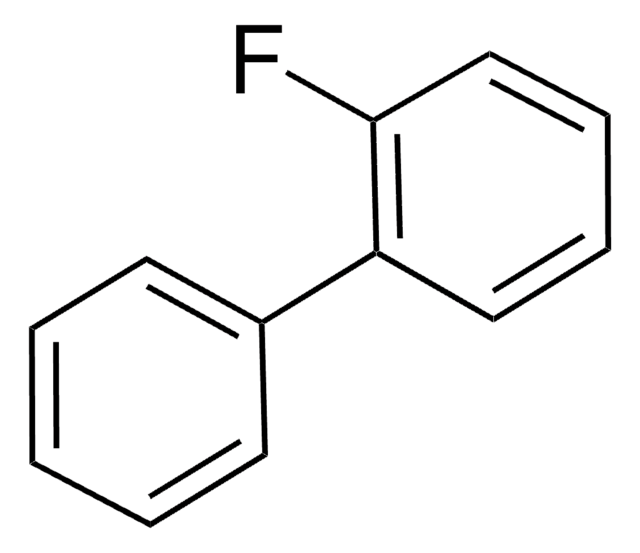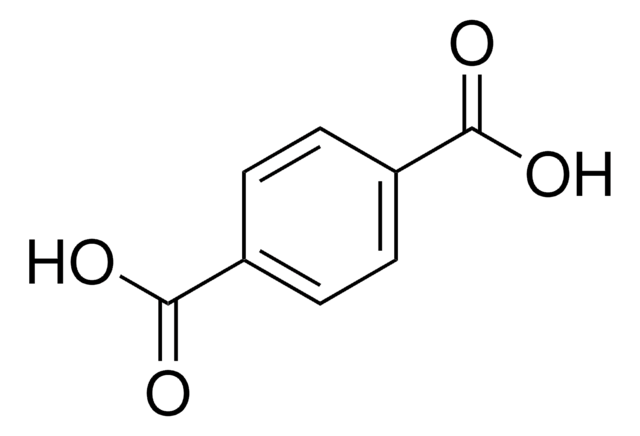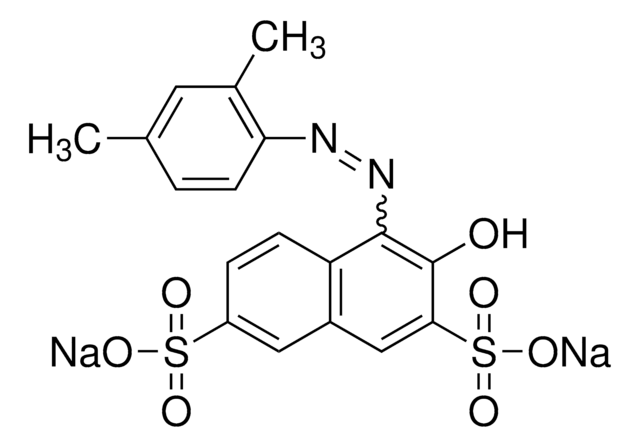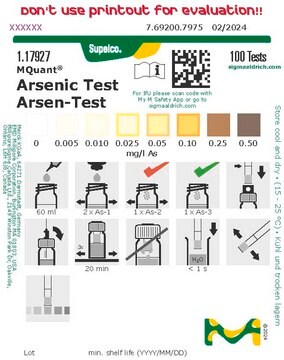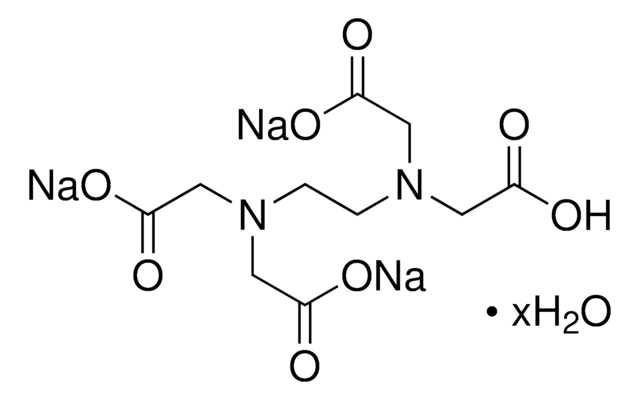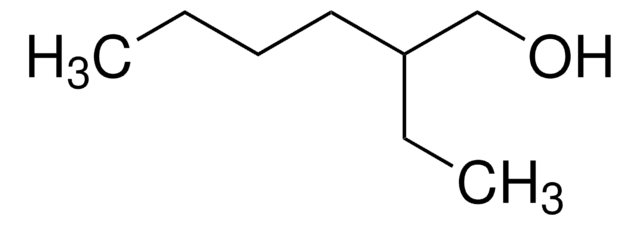48722-U
2-Fluorobiphenyl solution
2000 μg/mL in dichloromethane, analytical standard
About This Item
Productos recomendados
grado
analytical standard
Nivel de calidad
Agency
EPA 8090,8100
CofA
current certificate can be downloaded
Características
standard type surrogate
envase
ampule of 1 mL
concentración
2000 μg/mL in dichloromethane
técnicas
HPLC: suitable
gas chromatography (GC): suitable
aplicaciones
environmental
Formato
single component solution
temp. de almacenamiento
2-30°C
InChI
1S/C12H9F/c13-12-9-5-4-8-11(12)10-6-2-1-3-7-10/h1-9H
Clave InChI
KLECYOQFQXJYBC-UHFFFAOYSA-N
¿Está buscando productos similares? Visita Guía de comparación de productos
Categorías relacionadas
Descripción general
Aplicación
Palabra de señalización
Warning
Frases de peligro
Consejos de prudencia
Clasificaciones de peligro
Carc. 2 - Eye Irrit. 2 - Skin Irrit. 2 - STOT SE 3
Órganos de actuación
Central nervous system
Código de clase de almacenamiento
6.1D - Non-combustible acute toxic Cat.3 / toxic hazardous materials or hazardous materials causing chronic effects
Clase de riesgo para el agua (WGK)
WGK 2
Punto de inflamabilidad (°F)
Not applicable
Punto de inflamabilidad (°C)
Not applicable
Equipo de protección personal
Eyeshields, Faceshields, Gloves, type ABEK (EN14387) respirator filter
Elija entre una de las versiones más recientes:
¿Ya tiene este producto?
Encuentre la documentación para los productos que ha comprado recientemente en la Biblioteca de documentos.
Protocolos
US EPA Method 610 describes the analysis of polynuclear aromatic hydrocarbons (commonly referred to as PAHs or PNAs) by both HPLC and GC.
US EPA Method 8270 (Appendix IX): GC Analysis of Semivolatiles on Equity®-5 (30 m x 0.25 mm I.D., 0.50 μm)
Nuestro equipo de científicos tiene experiencia en todas las áreas de investigación: Ciencias de la vida, Ciencia de los materiales, Síntesis química, Cromatografía, Analítica y muchas otras.
Póngase en contacto con el Servicio técnico